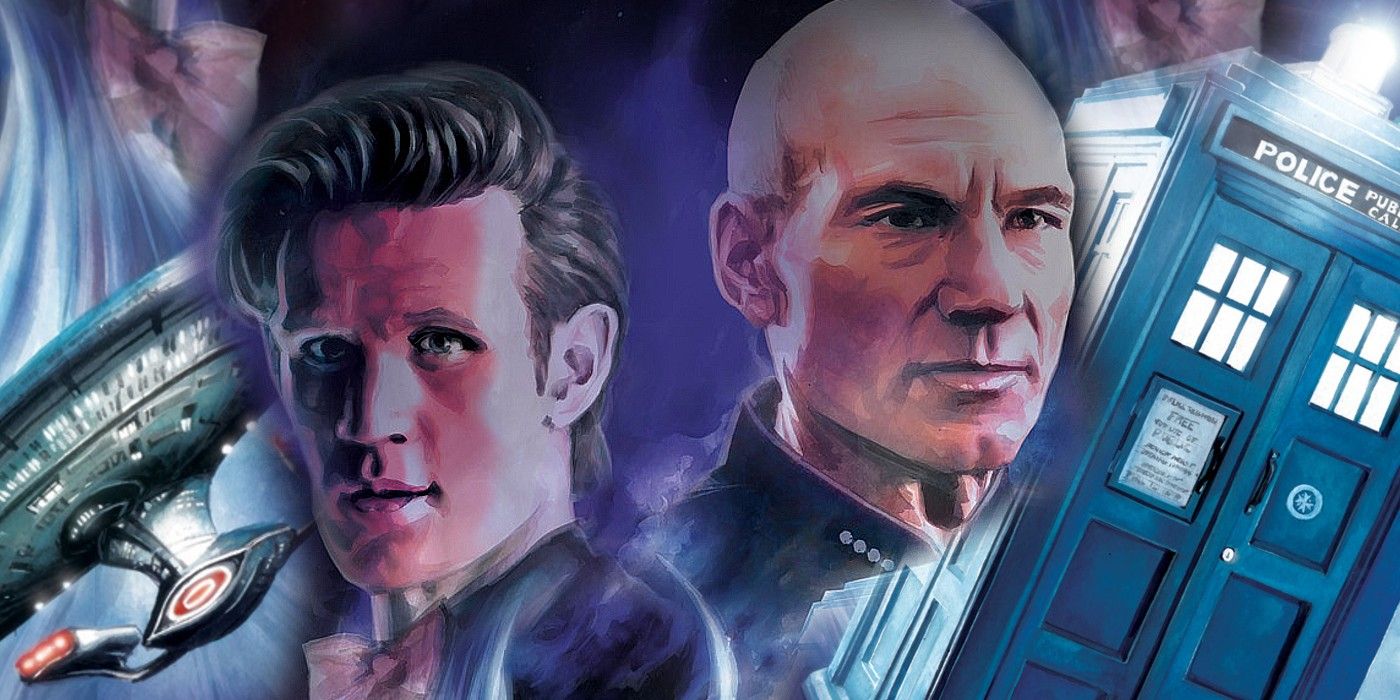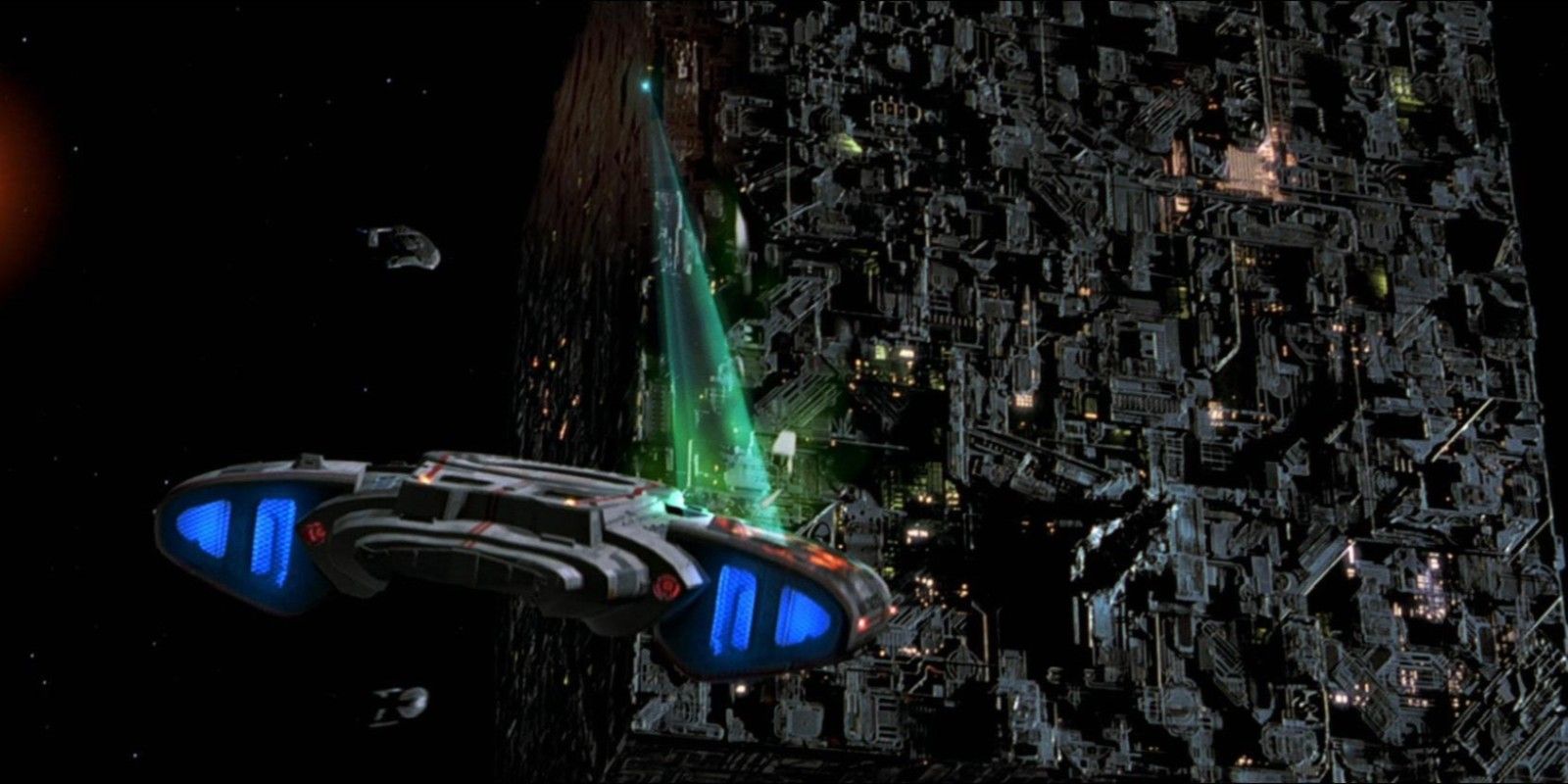A Doctor Who/Star Trek crossover revealed why the Borg suddenly attempted to change humanity's past in Star Trek: First Contact – they got the idea from studying the Eleventh Doctor and his TARDIS.
Doctor Who and Star Trek are both iconic sci-fi properties, inspiring and referencing each other numerous times across their lengthy and varied histories. But despite their similarities and their longstanding bond, the sagas have never crossed over; except for one occasion, during which the Doctor unwittingly shaped key events in the Star Trek timeline. In IDW's officially licensed, eight-issue comic book series entitled Star Trek: The Next Generation/Doctor Who: Assimilation², the Eleventh Doctor and his companions Amy and Rory Williams inadvertently land outside of their own universe, where they soon encounter Captain Picard and the main characters of Star Trek: The Next Generation aboard the Enterprise-D's holodeck.
But the amusing, initial banter soon dies off when they discover that the Cybermen are at large. After leaving their home dimension in the Tenth Doctor's era, they resumed their campaign of conquest by forming a brief alliance with the Borg. Yet the Doctor's arrival actually accelerates their plans. Stealing Borg technology and massacring countless drones, the Cybermen now threaten to convert the entirety of existence.
The crews of the Doctor's TARDIS and the Enterprise quickly band together to defeat the threat, alongside several drones that survived the Cybermen’s purge. The team of heroes uses the TARDIS to tinker in the past, before dematerializing on the Cyber flagship, where they are forced to restore the Borg Collective to defeat the Cybermen. However, as the group board the TARDIS to escape from the exploding vessels, the Borg turn on their former comrades and attempt to assimilate the Doctor's vessel, so that they can use its capabilities to subjugate every world, time zone, and dimension.
It takes the combined efforts of Rory, Commanders Worf, and Data – along with the TARDIS itself – to cast the drones into the Time Vortex. With their enemies defeated, all appears to be well again as the Doctor and his companions leave the Star Trek universe for the final time. Yet the comic’s last panels soon prove otherwise. Deep in the bowels of a Cube, the Borg Collective closely assesses what they have discovered about the TARDIS and its owner and, in the comic’s chilling last line, they decide that they need to develop their own brand of time travel.
Star Trek fans will immediately recognize the significance of this, and what the Borg’s research will lead to: an effort to assimilate humanity before they can form the Federation. Certainly, if it had not been for Picard and the crew of the Enterprise-E in Star Trek: First Contact, their plan would have been successful, and the Borg would reign supreme across the galaxy. So, all in all, it seems that the Doctor and his friends left a lasting impression.
Assimilation2 is an enjoyable, fan-pleasing crossover yet it must be noted that, ultimately, its canonicity is somewhat debatable. After all, it's very rare that the main character of one TV series is made to be responsible for major events in another rival show. But who knows? With unlikely faces like Christopher Eccleston's Ninth Doctor returning, and a shared history of contradictory continuities, it’s hard to predict what the future may hold for two of science fiction’s most enduring TV shows. And, even if both properties ignore (or outright retcon) this tale, that doesn’t mean that the story cannot be enjoyed on its own merits, by fans of Star Trek and Doctor Who alike.


